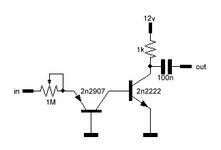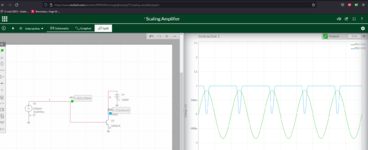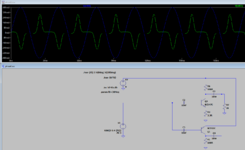neazoi
Advanced Member level 6
Hi,
I need a circuit for the opposite of the logarithmic amplifier. I.e. I need to amplify more the higher level signals and less the lower level signals.
In some spectrum analyzers this is caller a square law amplification.
I want the circuit to work in HF spectrum.
Could you suggest a way to do this (discrete components preferred).
I need a circuit for the opposite of the logarithmic amplifier. I.e. I need to amplify more the higher level signals and less the lower level signals.
In some spectrum analyzers this is caller a square law amplification.
I want the circuit to work in HF spectrum.
Could you suggest a way to do this (discrete components preferred).
--- Updated ---
I just found that it is called an exponential amplifier. So I am looking a (preferably discrete) exponential amplifier for HFHi,
I need a circuit for the opposite of the logarithmic amplifier. I.e. I need to amplify more the higher level signals and less the lower level signals.
In some spectrum analyzers this is caller a square law amplification.
I want the circuit to work in HF spectrum.
Could you suggest a way to do this (discrete components preferred).
Last edited:




